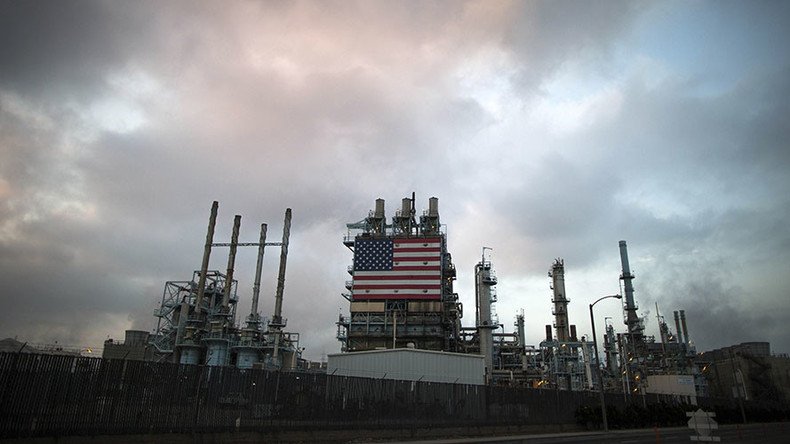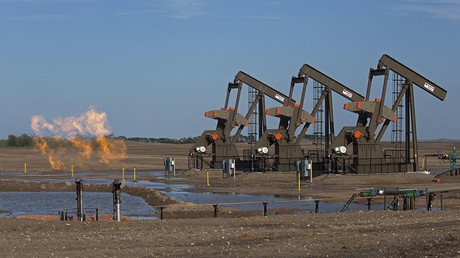Sub-$50 oil could kill shale

Oil prices are at their highest levels in months on the back of strong demand and some key supply outages around the world. But the next price movements are unclear, as is the response from US shale.
As the International Energy Agency (IEA) noted last week, global oil supply fell in August by about 720,000 bpd (barrels per day)—a large contraction after months of sizable gains. Much of that is probably temporary, particularly in the US and Libya, two countries that saw unexpected outages. But the demand story is arguably more important: the IEA upgraded its demand forecast for the year, as consumption has surprised on the upside.
WTI is now back in the vicinity of $50 per barrel, while Brent topped $55 per barrel in recent days—its highest level since the beginning of 2017. But that doesn’t mean that the price gains will continue. There are a few reasons to be skeptical that the momentum will carry crude prices higher than current levels.
CNBC notes that over the past three years, whenever WTI rose above $50 per barrel, a ton of pressure quickly derailed the upward trend. CNBC found that WTI exceeded $50 per barrel 18 times since December 2014, but after it crossed that threshold, the next week’s price movement was positive only 28 percent of the time. Or, put another way, over the past three years, whenever WTI jumped above $50 per barrel, three out of four times the price dropped a week later. Meanwhile, The United States Short Oil Fund, an exchange-traded fund that shorts WTI, was positive 67 percent of the time in the week following a $50 price breach.
In other words, major investors quickly made bearish bets whenever it seemed that WTI was getting too high, and in many cases $50 per barrel was the threshold around which bullishness and bearishness pivoted.
Bye, dollar? China & allies move oil trade away from US currency – Jim Rogers https://t.co/PmZEkACvs4pic.twitter.com/z7bAEgBXyk
— RT (@RT_com) September 16, 2017
That makes sense because $50 also seems to be an important marker for the starting and stopping of US shale. Drilling activity ramped up at the end of last year and earlier this year after the initial OPEC agreement pushed prices above $50. But drilling activity came to a screeching halt and the rig count flat-lined a few months ago when WTI sank to the low $40s.
Now, a few months after shale drillers dialed back their ambitions, the oil market seems much improved and WTI is back at $50. While breakeven prices vary widely from driller to driller, $50 per barrel appears to be a rough rule of thumb for an industry-wide average breakeven price. While imprecise, the past year or so has seen shale ramp up and down depending on which side of $50 per barrel WTI finds itself on.
The next steps are important but also uncertain. If WTI does post some gains, it seems reasonable to expect US shale companies to accelerate drilling activity.
But even if drillers feel confident with $50 oil, not everyone thinks the industry is on sound financial footing. Jim Chanos, a short-seller with Kynikos Associates, spoke at a CNBC investor’s conference last week and laid out his case for shorting the shale industry.
“In our view, people have been looking at this industry through the rose-colored glasses of Wall Street,” he said. “And this is the inherent problem with the North American shale business.”
Chanos argued that shale drillers are using up all of their revenues to reinvest in capex, leaving them with little to nothing left over to pay off debt. Because companies have to keep drilling in order to maintain production, they find themselves stuck on a spending treadmill.
“The way to think about it is that unlike other businesses, your assets literally get burned up,” he stated. One of the companies Chanos singled out during his speech: Continental Resources, the North Dakota and Oklahoma shale driller.
Continental’s CEO Harold Hamm was testy in a follow-up CNBC interview, responding to Chanos’ claims.
"Well, first of all, I can say almost, who is this guy? A short-seller,” Hamm declared. He also suggested that Chanos might be getting burned as oil prices rise, and he is simply trying to talk down oil prices.
The exchange is fitting because Hamm has previously said that $50 per barrel was the price needed to keep shale sustainable. If WTI stays at current levels or moves up from here, we’ll find out if he is right over the next few quarters.
This article was originally published on Oilprice.com













